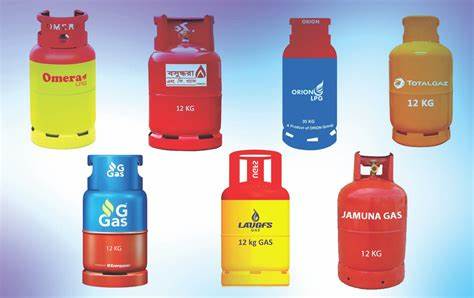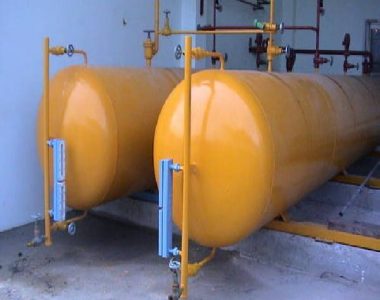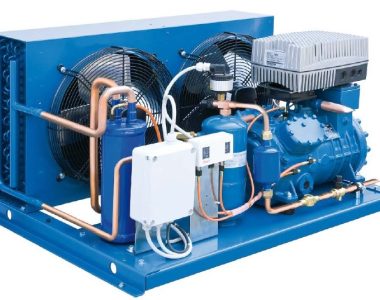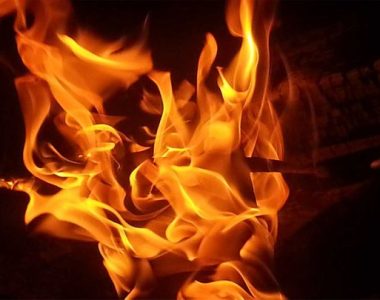
Liquefied Petroleum Gas (LPG) is widely used for cooking in Bangladesh, particularly in urban areas and households that have access to piped gas or LPG cylinders. Here’s an overview of LPG usage for cooking in Bangladesh:
- Availability and Accessibility:
- LPG is readily available in Bangladesh through various distribution channels, including state-owned companies, private suppliers, and dealers. It is commonly distributed in refillable cylinders of varying sizes, ranging from small 12 kg cylinders to larger ones.
- Urban vs. Rural Usage:
- LPG usage is more prevalent in urban areas of Bangladesh, where piped gas infrastructure is limited or unavailable. In rural areas, where piped gas is scarce, alternative cooking fuels such as firewood, cow dung, and charcoal are still widely used due to limited access to LPG and affordability constraints.
- Cleaner Cooking Alternative:
- LPG is considered a cleaner cooking alternative compared to traditional solid fuels like firewood and coal. Its use can help reduce indoor air pollution, respiratory diseases, and deforestation associated with traditional cooking methods.
- Safety Regulations and Practices:
- The Bangladesh government has established safety regulations and standards for the handling, storage, and distribution of LPG to ensure the safety of consumers and the public. These regulations cover aspects such as cylinder inspection, valve integrity, transportation, and storage facilities.
- Affordability and Subsidy Programs:
- Affordability can be a concern for some households, particularly those with lower income levels. To address this issue, the government of Bangladesh has implemented subsidy programs to make LPG more affordable for low-income households. These programs often target vulnerable populations and provide subsidies or vouchers for the purchase of LPG cylinders or refills.
- Environmental Impact:
- The widespread adoption of LPG for cooking in Bangladesh has positive environmental implications, including reduced deforestation and carbon emissions compared to traditional cooking fuels. However, the environmental impact of LPG usage also depends on factors such as cylinder recycling and proper waste management practices.
Here is the List of Brands who supply LPG in Bangladesh market

| Company Name | Brand Name |
|---|---|
| Bashundhara LP Gas Ltd. | Bashundhara LP Gas |
| Jamuna Gas® / Jamuna Spacetech JV Ltd (JSJVL) | Jamuna Gas |
| INDEX LP GAS Limited. | INDEX LP Gas |
| BM LP Gas / BM Energy Bangladesh Ltd. | BM LP Gas |
| LAUGFS Gas (Bangladesh) Ltd. | LAUGFS Gas |
| Totalgaz / Totalgaz Bangladesh | Totalgaz |
| Omera LPG / Omera Petroleum Limited | Omera LPG |
| JMI LPG / JMI Industrial Gas Ltd. (JIGL) | JMI LPG |
| SKS LPG | SKS LPG |
| Navana LPG Limited | Navana LPG |
| G-Gas LPG (Energypac) | G-Gas LPG |
| Beximco Smart Cylinder™ / Beximco Petroleum Ltd. | Beximco Smart Cylinder |
| Bin Habib Bd Ltd | Bin Habib |
| Universal LP Gas | Universal Gas |
| Orion Gas Bangladesh | Orion Gas |
Lets have composition comparison of two Branded LPG
Here we have taken randomly two one is TOTAL and Another is Beximco. The comparison is not influence or Paid. This is fully our own experiment.
LPG Composition Compare :
| TEST ITEMS | UNIT | COMPOSITE (TOTAL Brand) | COMPOSITE(Beximco) |
| Vapour Pressure @ 37.8 Deg C | KPA | 531 | 646.12 |
| Total Sulphur | ppm | 5.1 | 10.10 |
| Free Water | — | NIL | NIL |
| Cu Corrosion, 1H @ 37.8 Deg C | — | 1 | 1 |
| Density@ 15 Deg C | Kg/L | 0.5643 | 0.5506 |
| Compositions : | — | ||
| C2 Hydrocarbon | wt% | 0.4 | 0.14 |
| C3 Hydrocarbon | wt% | 27.4 | 34.83 |
| C3 & Lighter Hydrocarbon (Propane) | wt% | 25 | 34.97 |
| C4 Hydrocarbon | wt% | 71.7 | 64.89 |
| C4 & Heavier Hydrocarbon Butane) | wt% | 75 | 65.03 |
| C5 Hydrocarbon & Heavier | wt% | 0.5 | 0.14 |
| Butadiene | wt% | <0.01 | |
| Residue on Evap @ 38 Deg C | ml/100ml | <0.05 | |
| Molecular weight | — | 53.21 | |
| Odor | — | Detectable |
Let’s compare the parameters for TOTAL Brand and Beximco LPG:
- Vapour Pressure @ 37.8°C (kPA):
- Composite (TOTAL Brand): 531 kPA
- Composite (Beximco): 646.12 kPA
- The lower the vapor pressure, the better, as it indicates the gas will remain in liquid form under normal conditions. Therefore, TOTAL Brand has a better vapour pressure.
- Total Sulphur (ppm):
- Composite (TOTAL Brand): 5.1 ppm
- Composite (Beximco): 10.10 ppm
- Lower total sulphur content is preferable as it can reduce air pollution and potential equipment corrosion. TOTAL Brand has a lower total sulphur content, making it preferable.
- Free Water:
- Both brands have no detectable free water, which is desirable.
- Cu Corrosion, 1H @ 37.8°C:
- Both brands have a Cu Corrosion of 1, indicating no significant corrosion. They are equal in this aspect.
- Density @ 15°C (Kg/L):
- Composite (TOTAL Brand): 0.5643 kg/L
- Composite (Beximco): 0.5506 kg/L
- Higher density indicates more energy content per volume, so TOTAL Brand has a slightly higher density.
- Compositions:
- Both brands have different compositions of hydrocarbons, but based on the given weights, they seem to be within acceptable ranges.
- Odor:
- Both brands have detectable odor, which is necessary for safety.
Given the analysis, TOTAL Brand seems to perform better overall, with lower vapor pressure, total sulphur content, and slightly higher density compared to Beximco. However, it’s essential to consider other factors such as availability, pricing, and specific needs before making a final decision.
The proportions of propane and butane in LPG (liquefied petroleum gas) can affect its performance and suitability for various applications, including cooking, heating, and industrial processes. Here’s what could happen if the levels of propane and butane are either lower or higher:
- Lower Propane Content:
- Reduced Energy Content: Propane generally has a higher energy content per unit volume compared to butane. Therefore, lower propane content would result in a decrease in the overall energy content of the LPG mixture. This could lead to decreased efficiency in cooking or heating applications, requiring higher consumption for the same level of output.
- Vaporization Issues: Propane has a lower boiling point compared to butane. If the propane content is too low, there might be difficulties in vaporizing the LPG, especially in colder environments, leading to poor combustion and inefficient burning.
- Higher Propane Content:
- Higher Energy Content: Increasing the propane content would enhance the energy content of the LPG mixture. This could result in more efficient combustion and higher heat output in cooking or heating applications.
- Vaporization Efficiency: With higher propane content, LPG would vaporize more readily, ensuring better performance in colder conditions. However, too high a propane content might lead to excessive pressure buildup in storage tanks and could require additional safety measures.
- Lower Butane Content:
- Reduced Stability: Butane helps to maintain the stability of the LPG mixture, especially in warmer temperatures. Lower butane content could make the LPG mixture more prone to vaporization and potentially cause pressure fluctuations in storage tanks.
- Cold Weather Performance: Butane is more suited for use in colder temperatures compared to propane. Therefore, decreasing the butane content might result in reduced performance in cold climates, where vaporization might become difficult.
- Higher Butane Content:
- Lower Energy Content: Butane has a slightly lower energy content compared to propane. Therefore, increasing the butane content could lead to a decrease in the overall energy content of the LPG mixture.
- Cold Weather Performance: While butane is less suited for cold weather compared to propane, excessively high butane content could result in difficulties in vaporization and combustion even in moderate temperatures.
Determining which composition of propane and butane is “good” depends on the specific requirements and conditions of your application. Here are some considerations:

- Cooking and Heating Applications:
- For cooking and heating, a balanced composition of propane and butane is often preferred. A mixture with a higher proportion of propane might provide more energy per unit volume, making it suitable for applications requiring higher heat output. However, if the environment is colder, a higher proportion of butane might be advantageous as it performs better in lower temperatures.
- Outdoor vs. Indoor Use:
- For outdoor use, especially in colder climates or during winter, a higher proportion of propane may be preferred due to its better performance in cold temperatures. On the other hand, for indoor use or in warmer climates, a balanced composition or slightly higher butane content might suffice.
- Safety Considerations:
- Safety is paramount when dealing with LPG. Excessive pressure build-up due to high propane content or instability caused by low butane content can pose risks. Therefore, it’s essential to adhere to safety guidelines and regulations set by relevant authorities.
- Availability and Cost:
- The availability and cost of propane and butane can vary depending on factors such as regional production, transportation costs, and market demand. Choosing a composition that balances performance requirements with cost-effectiveness is important
General Comparison
| Feature | Beximco Fiber Cylinder | Total Metal Cylinder |
|---|---|---|
| Weight | Lightweight | Heavier |
| Rust Resistance | Resistant | Susceptible |
| Safety | Safer | Risk of sparking |
| Transparency | Transparent | Not transparent |
| Corrosion | Non-corrosive | Susceptible |
| Environmental Impact | Eco-friendly | Less eco-friendly |
In summary, Beximco Fiber cylinders offer advantages in terms of weight, rust resistance, safety, transparency, and environmental impact compared to Total Metal cylinders.



